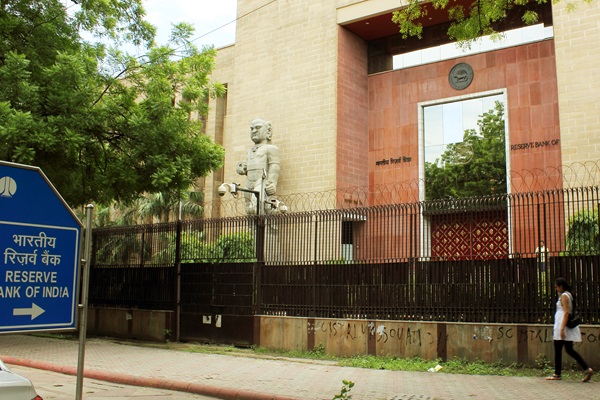.png)
Gurumurthy, ex-central banker and a Wharton alum, managed the rupee and forex reserves, government debt and played a key role in drafting India's Financial Stability Reports.
September 4, 2025 at 12:50 PM IST
The Reserve Bank of India, through its Department of Supervision, recently invited Expressions of Interest from consultancy firms to design frameworks for assessing the business models of supervised entities, migrating select Urban Cooperative Banks and Non-Banking Financial Companies to risk-based supervision, and developing supervisory manuals.
The initiative appears ambitious and also timely.
It reflects openness to new ideas and acknowledges that traditional approaches may need strengthening. Yet outsourcing the very architecture of supervision raises questions.
Codification is best done by practitioners. While consultants can add value, supervision cannot be reduced to manuals crafted by outsiders. Done poorly, such frameworks risk turning supervision into box-ticking.
Bank supervision is not a commodity; it is a craft honed through decades of practice.
Here are some arguments why this could be risky to have over-reliance on consultancy and suggestions as to how the RBI could balance external expertise with internal supervisory wisdom.
Art, Science
Much is revealed in conversations with bank managements; hesitation about asset quality, overconfidence in loan growth and evasiveness around governance, to mention a few. Such soft signals matter as much as ratios. Manuals, however detailed, cannot replicate instinct.
Bank supervision is not as intrusive as a statutory audit. Where it differs is in looking beyond the numbers — into processes, governance, board oversight, and effectiveness. At the same time, it is neither a survey nor a questionnaire. Rather, it can be described as a review of processes, outcomes, and oversight.
For instance, supervisors would typically examine the quality of loan origination, the robustness of recovery processes, and the effectiveness of board oversight. This broad mandate entails unique responsibilities. Consider a commercial bank heavily dependent on microfinance loans; such a model clearly carries higher default risk.
A supervisory review would therefore assess the adequacy of portfolio oversight, recovery performance, and capital buffers, i.e., risk-mitigating and absorbing frameworks. Understanding the business model is thus central to supervisory assessment.
It is in this context that the RBI’s decision to seek external assistance is intriguing. At such a mature stage of supervisory practice, the rationale for outsourcing business model assessment remains unclear. From the limited detail in the tender document, it is difficult to discern what precise gaps are being addressed or what value consultants are expected to add.
Turning to NBFCs, their asset quality review and governance challenges are, in principle, no different from those of banks. However, following the IL&FS incident, weaknesses in the inspection framework came to light. These included the layering of liabilities, where group companies or non-regulated subsidiaries guaranteed the obligations of regulated entities, and vulnerabilities linked to market access. Such examples show how entity-specific supervision and systemic footprint interact in complex ways.
A further issue concerns the mechanics of risk-based supervision.
‘Process and outcome’ oriented reviews certainly identify risk contributors, but how exactly should risk scores be assigned, in absolute terms or relative terms? How should they be validated? And once aggregated, what is the nature of that composite score? Comparing overall risk scores across similar entities, even when component-wise scoring is robust, is fraught with problems.
Similarly, comparing time-series scores of the same entity is also relevant. These challenges are inherent to any risk-based supervisory framework, including that of banks. Based on informal stakeholder feedback, it is unclear whether they have been fully resolved for banks; extending them wholesale to NBFCs risks compounding rather than easing these difficulties.
In all, consultancy-driven frameworks risk privileging the quantifiable while downplaying qualitative judgment. Supervisors may end up “seeing the trees but missing the forest.”
Risk of Monoculture
Consultancy projects often pursue uniformity. They deliver elegant frameworks that look impressive but risk creating monocultures. The European Central Bank’s Single Supervisory Mechanism, while standardising practices, was criticised for treating diverse institutions alike and overlooking idiosyncratic risks. India, with its sharper diversity, cannot afford a one-size-fits-all approach.
Consultant-led frameworks often breed bureaucracy. Supervision becomes about checklists and scoring models rather than probing inquiry. The US CAMELS system illustrates this. Useful as an organising tool, it nevertheless became formulaic, failing to anticipate crises like WaMu or IndyMac before the Global Financial Crisis. The framework was sound; its mechanical application was not.
India’s supervisors must avoid drifting into a similar comfort zone. Consultants should not push them toward bureaucracy at the expense of judgment.
This is not to dismiss consultancy altogether. Consultants can bring comparative perspectives, access to global practices, and technical expertise in analytics, scoring, and IT system design. They excel at structured project management, where RBI may face constraints.
Dashboards, supervisory software, and benchmarking exercises can be efficiently handled externally. But these should remain supporting roles. Consultants must enable supervisors, not substitute for them.
The RBI’s Department of Supervision has lived through multiple crises, whether it was cooperative bank collapses, the IL&FS debacle, NBFC strains in 2018, or the pandemic’s liquidity shock. Each episode imparted lessons no manual can capture, as the experiences are dynamic.
Hence, RBI must remain in the driver’s seat. Manuals should be authored by supervisors, with consultants providing research and comparative insights at most. Frameworks must be piloted internally and stress-tested before adoption. Intellectual ownership of supervision must remain with the RBI.
Global Experience
Global examples offer perspective:
- ECB: Its Supervisory Manual standardised practices but drew criticism for rigidity and missing local nuances. The ECB now emphasises proportionality.
- US regulators: The CAMELS framework was foundational but too rigid. Post-GFC, reforms re-emphasised discretion, particularly in stress tests.
- Basel Committee: The Basel Committee’s guidelines are deliberately principles-based rather than prescriptive, recognising that local supervisors must adapt them to national contexts.
The lesson: structured frameworks are useful, but discretion rooted in local realities is indispensable.
India’s Challenge
A heavily codified, consultant-driven model risks diluting supervisory sensitivity. Worse still, supervisors may become dependent on external tools, thereby weakening their confidence in independent judgment.
How should RBI proceed?
- Blend, Don’t Substitute: Use consultants for technical tasks — data systems, benchmarking, project management — but let supervisors design and own core frameworks.
- Retain Flexibility: Manuals should guide, not constrain, leaving room for discretion.
- Pilot and Feedback: Frameworks must be piloted on select institutions, with feedback built in before wider rollout.
- Guard Against Bureaucratisation: Leadership must stress that checklists are aids, not ends. Supervisory culture must prize curiosity and judgment.
The RBI’s EOI reflects a commendable desire to modernise supervision and absorb global best practices. But supervision is ultimately a sovereign function, anchored in judgment and local knowledge. Consultants can assist, but they cannot define supervision. Manuals can guide, but they cannot replace comprehension. Frameworks can organise, but they must not fossilise culture.
RBI must embrace external inputs while preserving the primacy of its own supervisory cadre. Done well, India’s supervisory architecture can remain modern and efficient, yet flexible and rooted in hard-earned wisdom.
In the end, the woods matter more than the trees.




